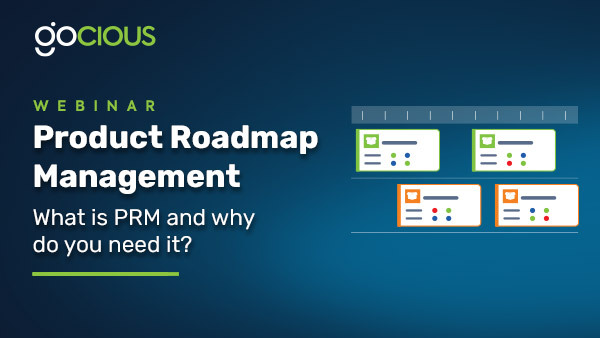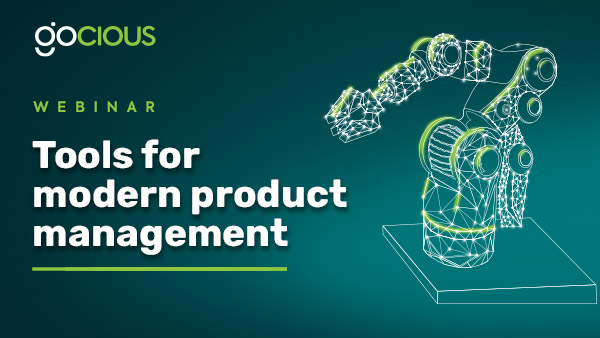On-Demand Webinar Videos
Learn about the latest in Product Roadmap Software innovation, manufacturing portfolio solutions, and cyber-physical product management tools.

Navigating Tariff Volatility
Discover how forward-thinking product teams are turning trade uncertainty into a competitive edge—adapting faster, aligning smarter, and future-proofing their product strategies in an era of shifting tariffs and global disruption.
What you’ll learn:
- How tariffs are reshaping product roadmaps and sourcing decisions
- Ways to align cross-functional teams under pressure
- How to build resilience through modularity and roadmap visibility
- Key signals product leaders should track to stay ahead of disruption

Driving Innovation in Cyber-Physical Manufacturing
Unpack how modular product architecture is changing the game for modern manufacturing teams—under pressure to build smarter, faster, while navigating the complexity of cyber-physical products.
What you’ll learn:
-
How modular architecture connects hardware and software teams
-
Why modularity is key to scaling agile product practices
-
How real-time roadmap updates drive faster, smarter decisions
-
Ways to boost alignment and flexibility across product lines

A deep dive into AGCO's migration to scaled agile framework with Gocious
Learn about the mindset shift required to initiate systems thinking and deliver AGCO's cutting-edge approach to product management.
Get the latest on:
- Connected Roadmap Intelligence
- Product Decision Analytics
- Business Transformation that Inspires

Collaboration made efficient using the Gocious - Jira Integration
Our main topic in this webinar is the importance of efficient collaboration between product management and development teams, particularly regarding the benefits of integrating Gocious's platform with JIRA.

Gocious product roadmap management
There are plenty of product roadmap tools out there today. Still, our research has shown there is a clear need to improve product roadmaps to ensure teams of teams are aligned, the entire portfolio meets strategic business objectives, and there is efficiency in re-using components and increasing innovation.

Tools for modern product management
The function of product management is evolving within manufacturing companies. Senior leadership is pressing for more growth, more innovation, more diversification, more market expansion. All of this falls in the lap of product management to figure out the path forward.

Optimize your product fit using past performance
Launching a new product can be a bit like a science experiment. You have made observations and created a hypothesis with data that supports your claims. Next, the hypothesis gets approved so you launch the product thus testing it.

Adapting Your Product Strategy Assessment for Today's Market
If you want your company to grow and expand, the key to success is a solid product strategy. Your product strategy must be flexible and nimble to quickly react to changing market conditions.

Establish Value with Competitive Pricing Analysis
As a manufacturer of products, you will ultimately need to set the price for your product in the market. There are pricing methodologies which exist to help you in your quest for the optimal price that the customer is willing to pay while maximizing your revenue and profit.

Boost Your Competitive Analysis While Product Planning
Product management teams rely on competitive intelligence and market research to plan out their product lines. But what happens when you try to line up your internal product definition with third-party market research.

Take your Product Management toolkit to the next level using Gocious
The Product Managers toolkit has traditionally relied primarily on general productivity tools like Excel, Word and PowerPoint. What happens when you make the change to something that has been specifically designed to help Product Managers?

An integrated approach to product management
An integrated approach to product management will increase collaboration between team members, data and software systems. Doing this helps to lower the risk of a product failure, while raising your teams efficiency and reducing your organizations time to market.

Using competitive analysis in your product planning
Doing an analysis on your competitive products is essential to making sure your planned products have the best chance of success in the marketplace. You must identify your strategic advantage and leave the competition in the rear-view mirror.

Optimize your product line with weighted scoring
Do you use weighted scoring today to make product and feature decisions? Do you use your own scoring model? or a simple Pugh analysis? How do you factor in innate bias in the decision-making process of what products and features to build?

Supercharge your PLM environment
Gocious recently held a webinar to discuss why integrating product planning with PLM is essential. The webinar, available to watch on-demand, presented the benefits of integration for PLM and product planning.

Product launch cycle trends in the age of agile manufacturing
We found that 62% of manufacturers are looking for ways to shorten their product launch cycle. Most of them are looking to PLM and digital transformation as the ways to shorten that cycle time.